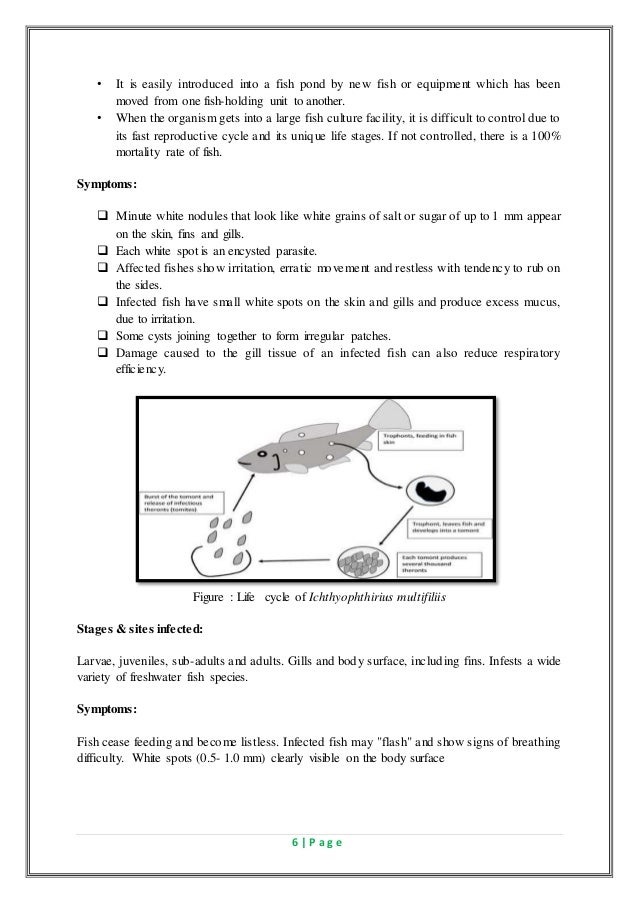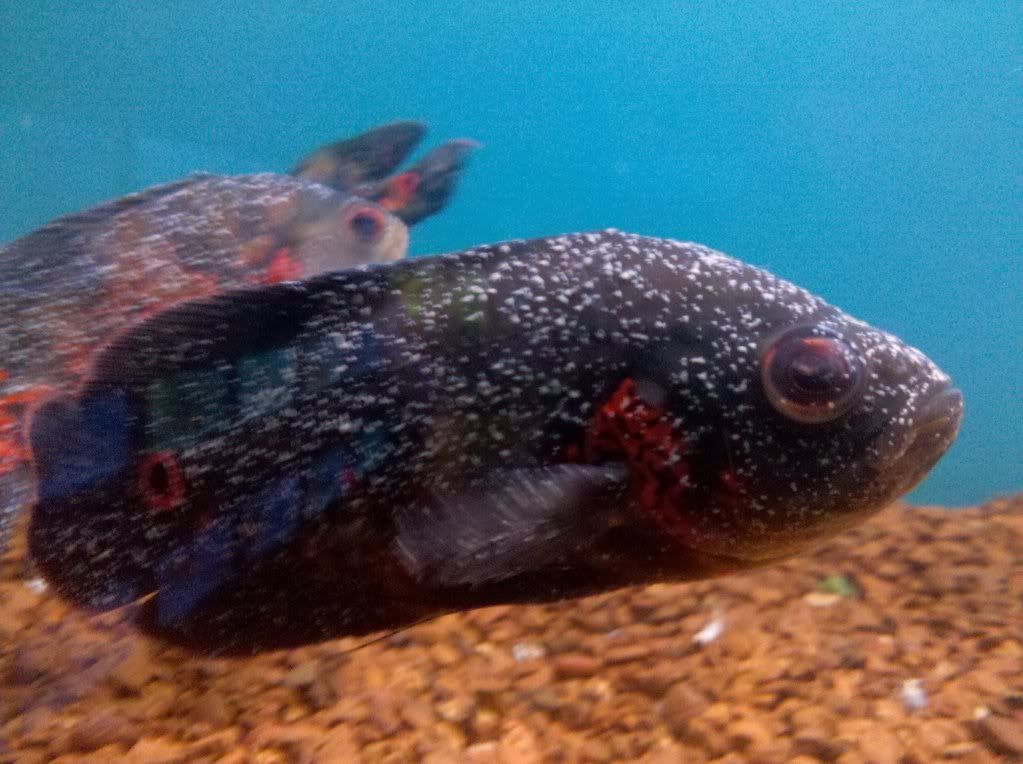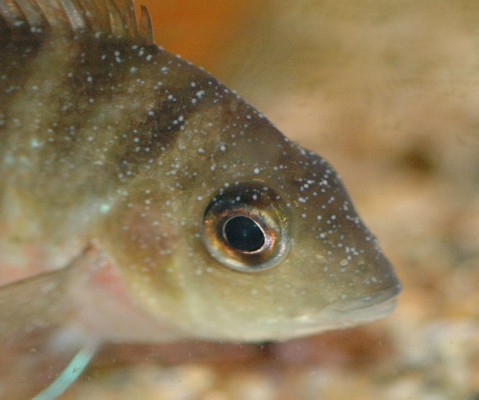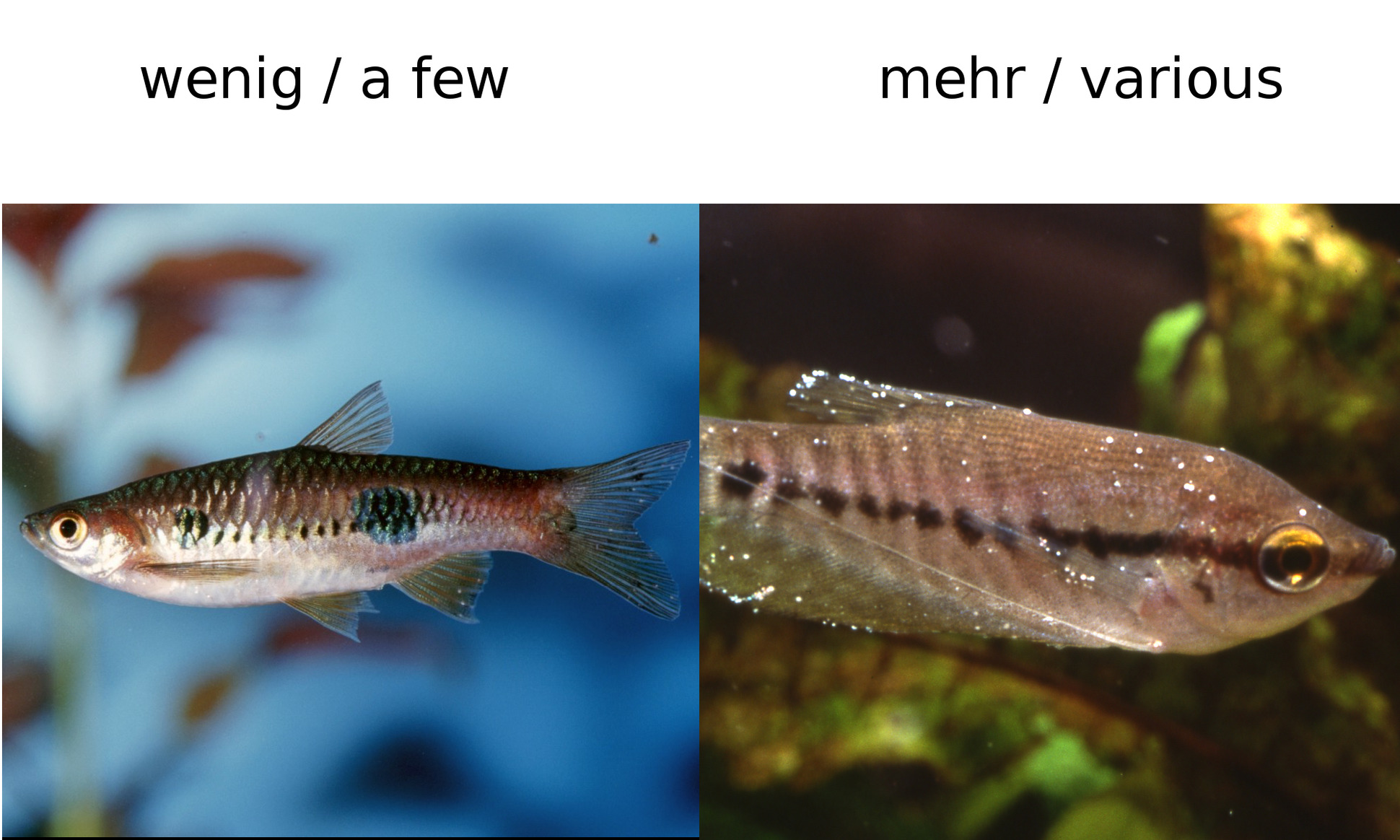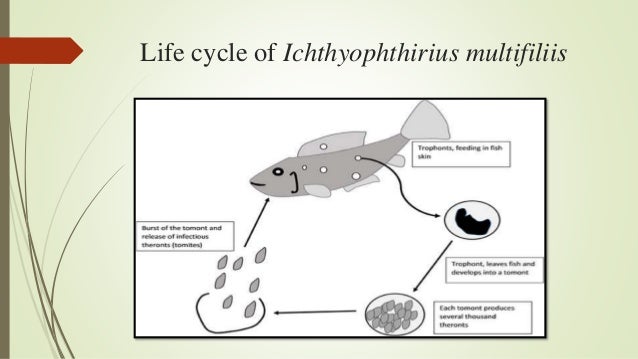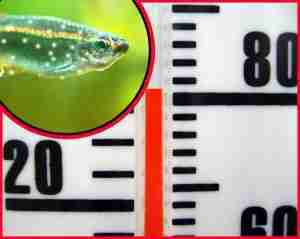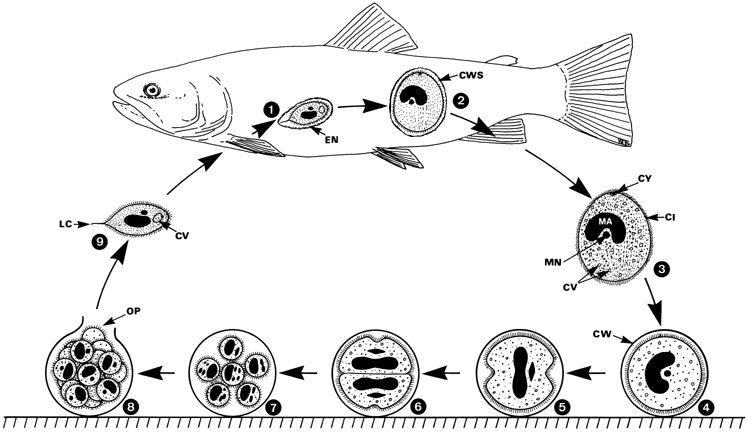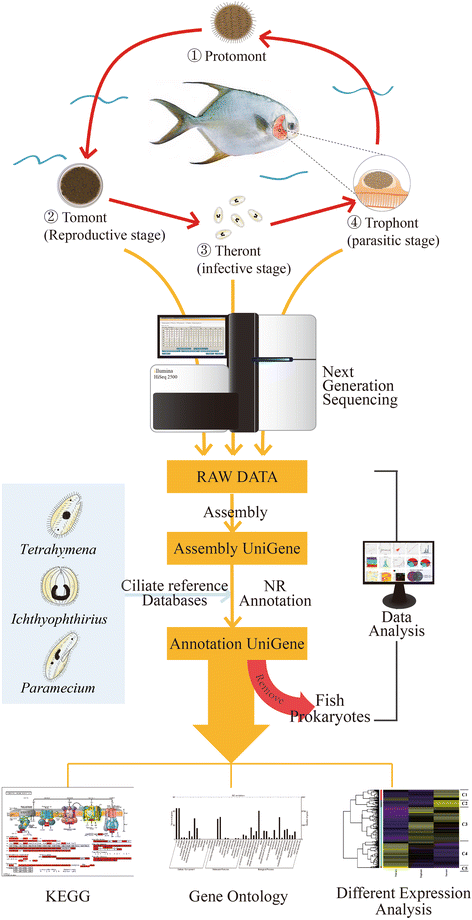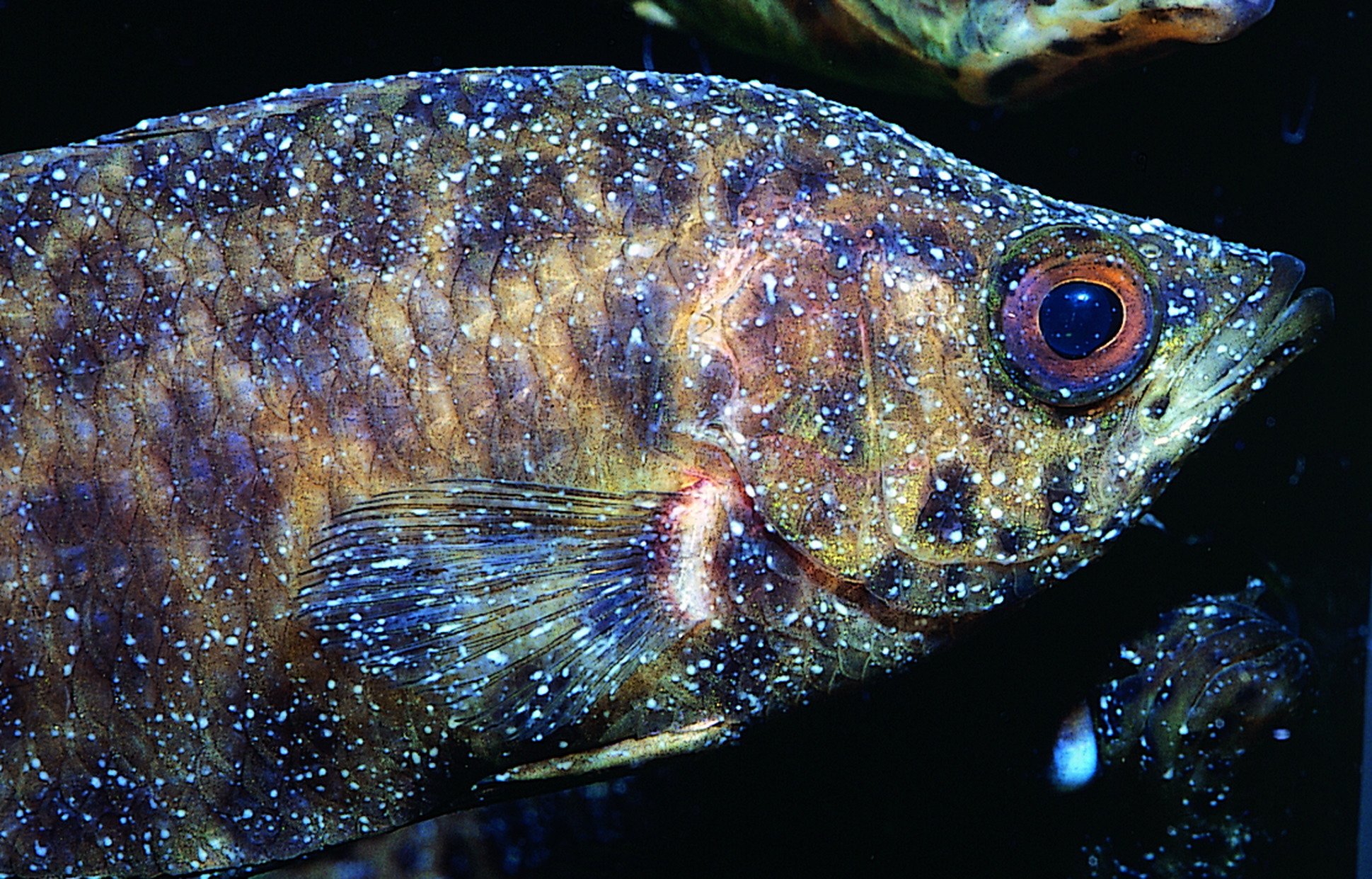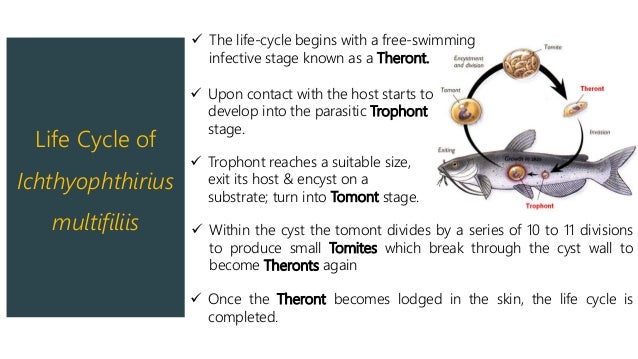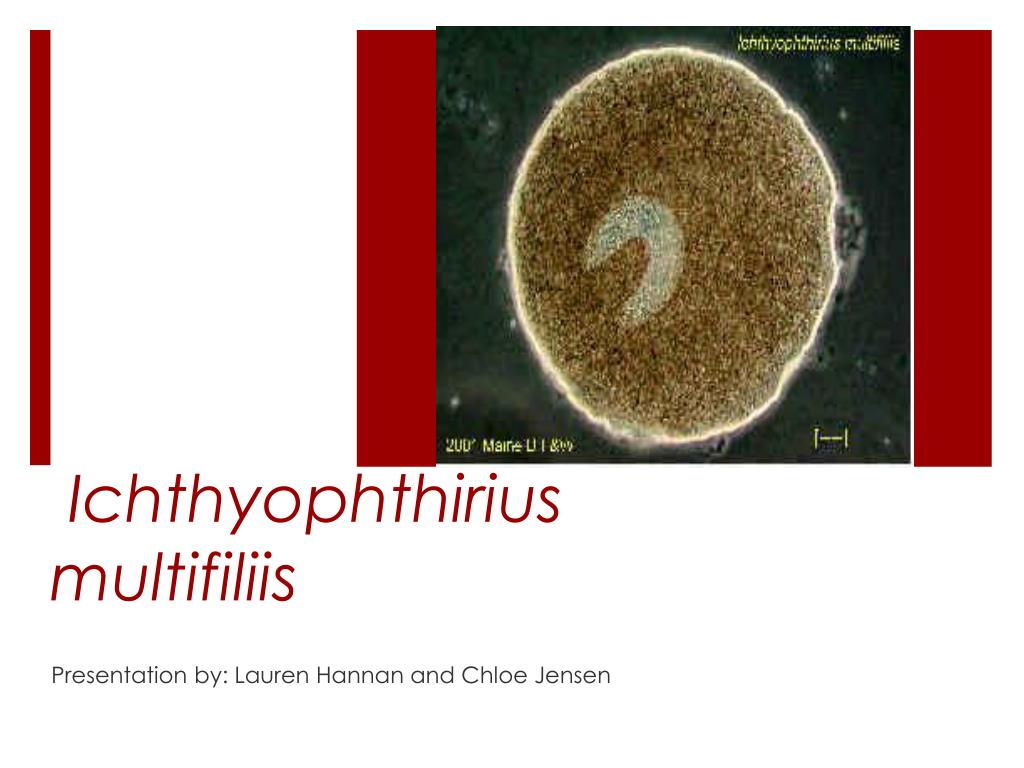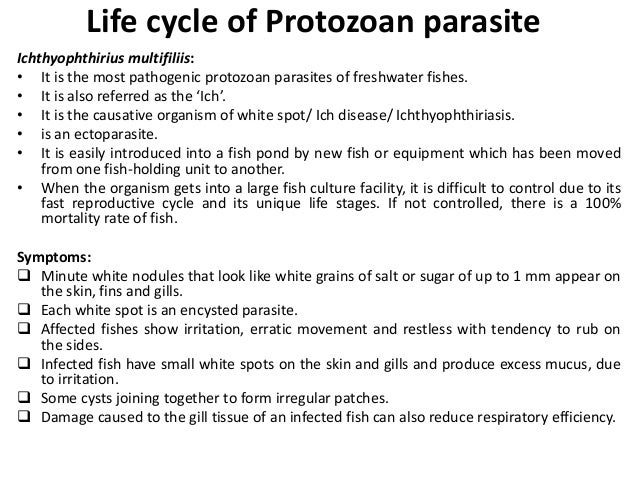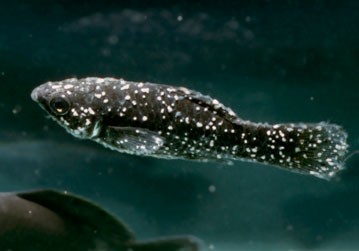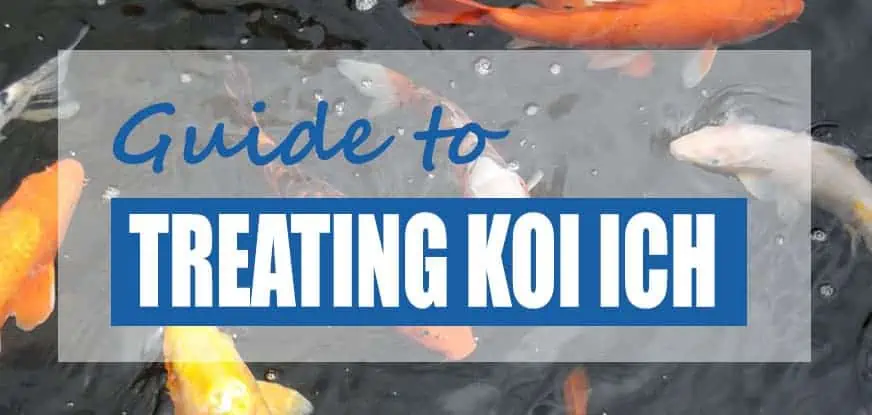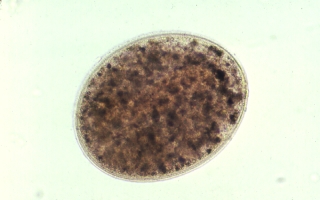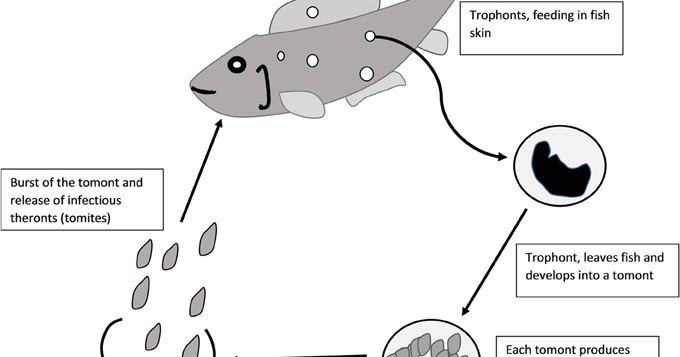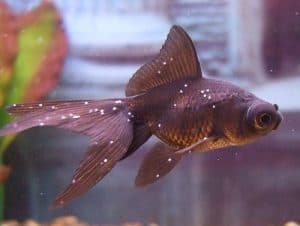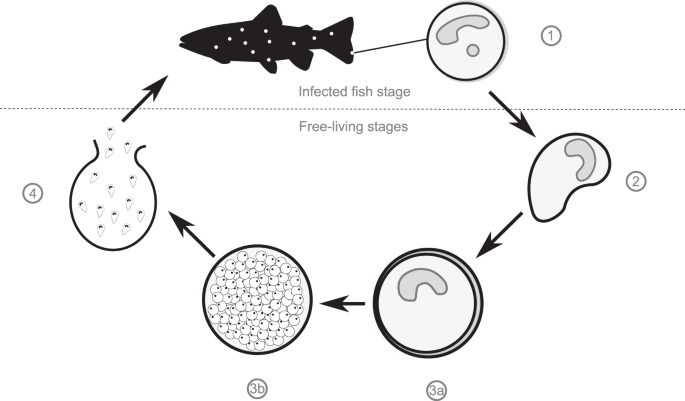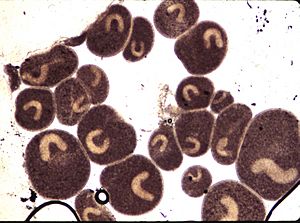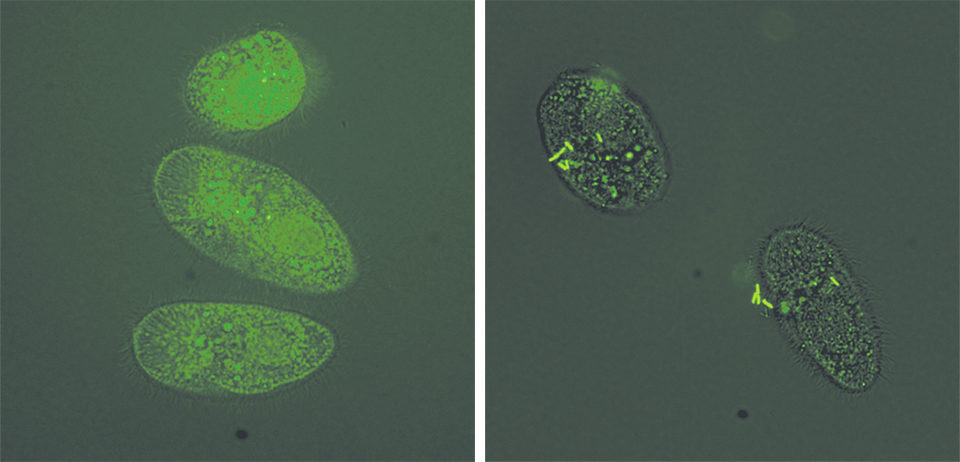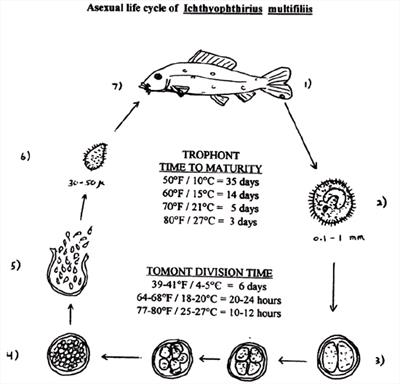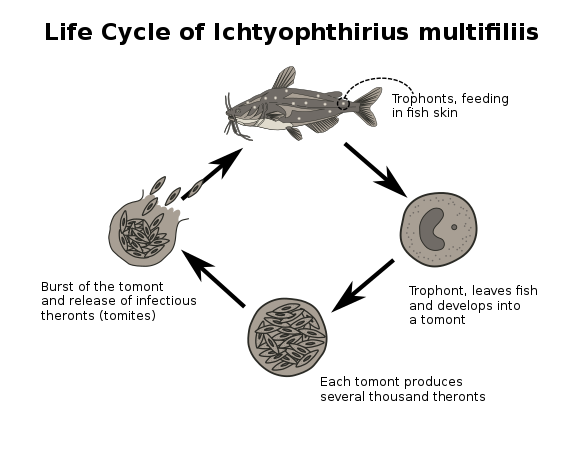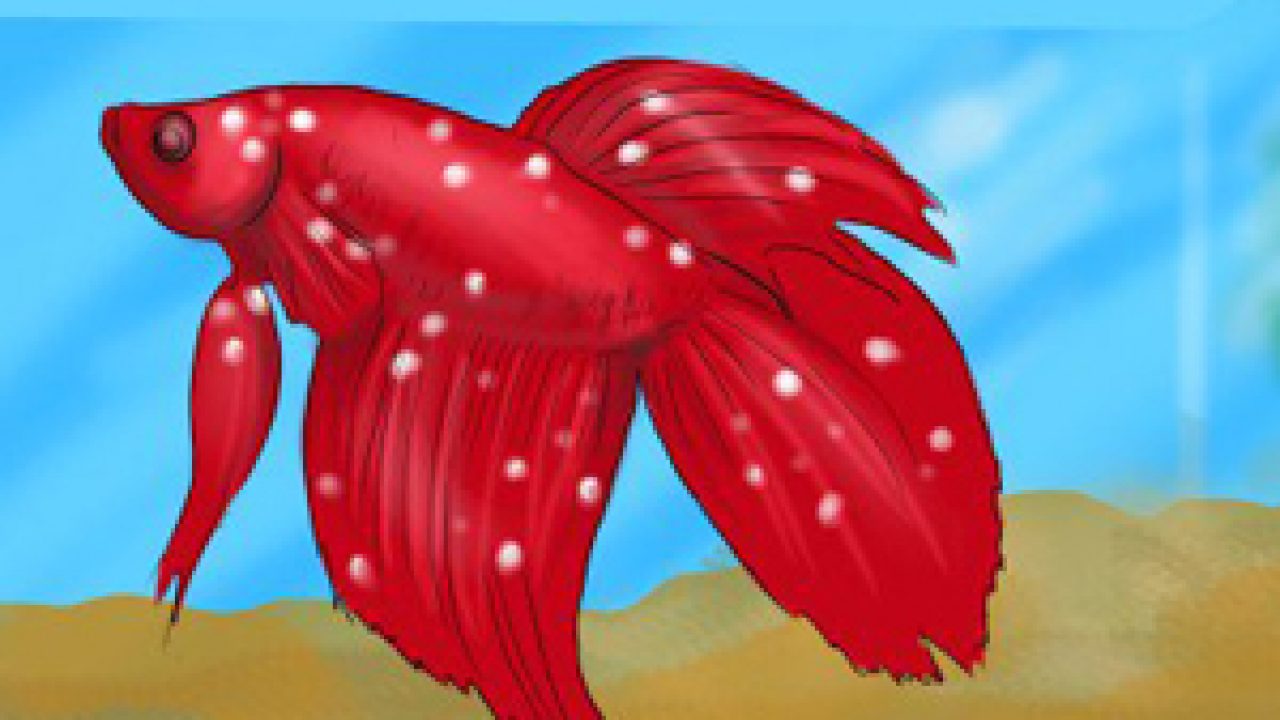ichthyophthirius multifiliis life cycle
Tomites penetrate the skin of the fish and the cycle is repeated. Ich also called white spot disease parasitic disease that affects a variety of freshwater fish species and that is caused by the ciliated protozoan ichthyophthirius multifiliis ich is one of the most common diseases encountered in tropical fish aquariums. The name literally translates as the fish louse with many children.
The parasite that causes white spot disease has a unique biological cycle.

Ichthyophthirius multifiliis life cycle. Non specific defences include skin and scales as well as the mucus layer secreted by the epidermis that traps microorganisms and inhibits their growth. Ich white spot disease ich is a very common disease problem of all aquarium fish including oscars. Jessie sanders the organism causing ich has a complex life cycle and can reproduce rapidly leading to a sudden onset of disease the development of the parasite occurs more quickly in warmer water. The neo ich is a new species of a recently discovered parasite causing white spot disease.
The life cycle of ichthyophthirius is complicated but very important in understanding the treatment and prevention of ich. The name ichthyophthirius multifilis translates to fish louse with many children a title that fits well as each parasite may produce more than a thousand offspring. 1 the on fish feeding trophont. Ichthyophthirius multifiliis often termed ich is a parasitic ciliate described by the french parasitologist fouquet in 1876 only one species is found in the genus which also gave name to the family.
In its free phase it reproduces. The trophont invades and encysts between the thin outer layers of the fish host. Let s take a detailed look at the ich life cycle. Lifecycle of the ich parasite.
This freshwater pathogenic parasite is characterized by very dense clusters of small white specks that appear identical in size to those. If pathogens breach these defences fish can develop inflammatory responses that increase the flow of blood to. 2 the environmental reproducing tomont. The condition is not caused by ichthyophthirius multifiliis which is responsible for normal ich but rather ichthyophthirius schlotfeldti.
Although ichthyophthirius multifiliis has a direct life cycle it is fairly complex and has three distinct life stages. Pathogenesis and parasite life cycle. And 3 the infective fish seeking theront see figure 1. Its signs include the presence of small white spots resembling a sprinkle of salt grains on the body and gills frequent scraping of the.
It has no preference for any particular tissue. It is caused by ichthyophthirius multifiliis a protozoan parasite according to veterinarian dr. Once the ich protozoan attaches to the side of the fish it begins feeding on the skin and tissue causing irritation. In the infecting phase the parasite crosses the outer layers of the fish s skin.
Although the disease is the equivalent of a skin infection ich can easily be fatal to a fish stressed by poor diet or habitat.


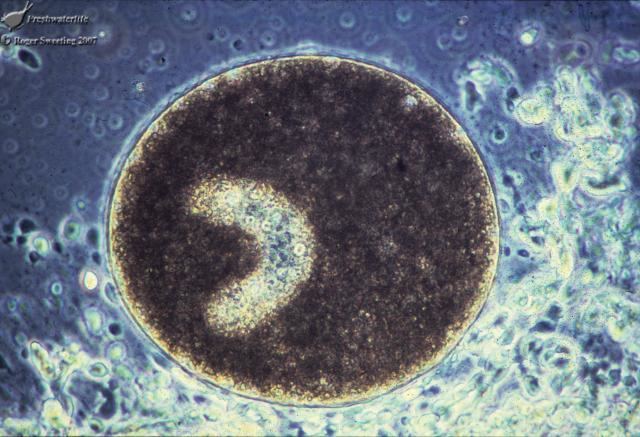

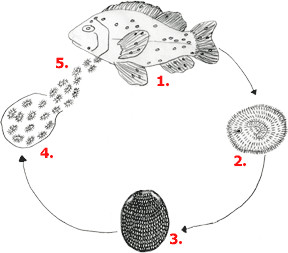

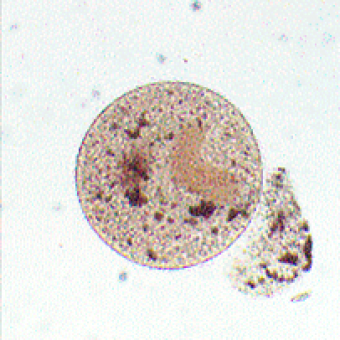


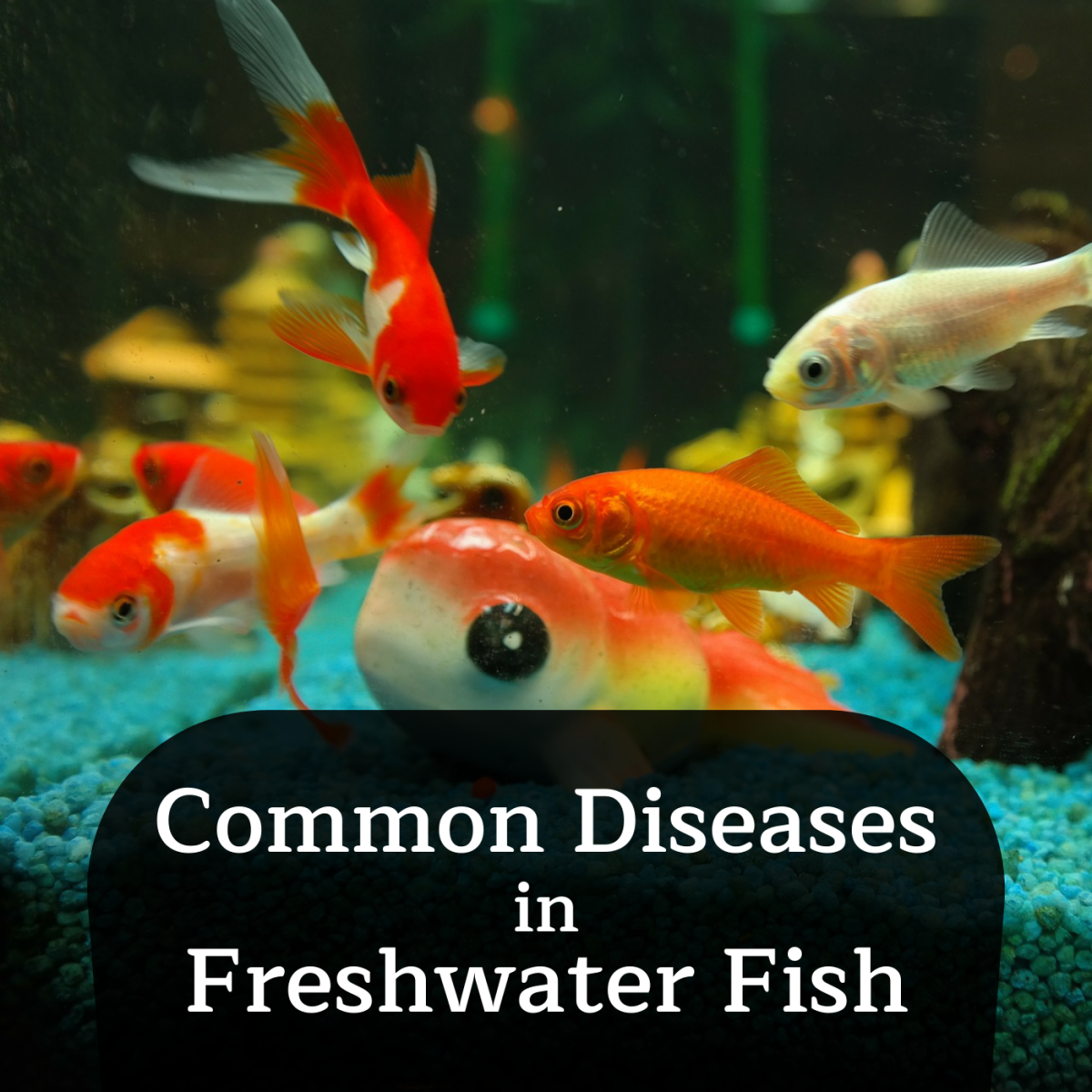




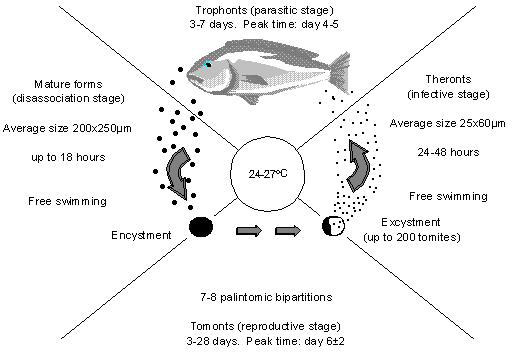
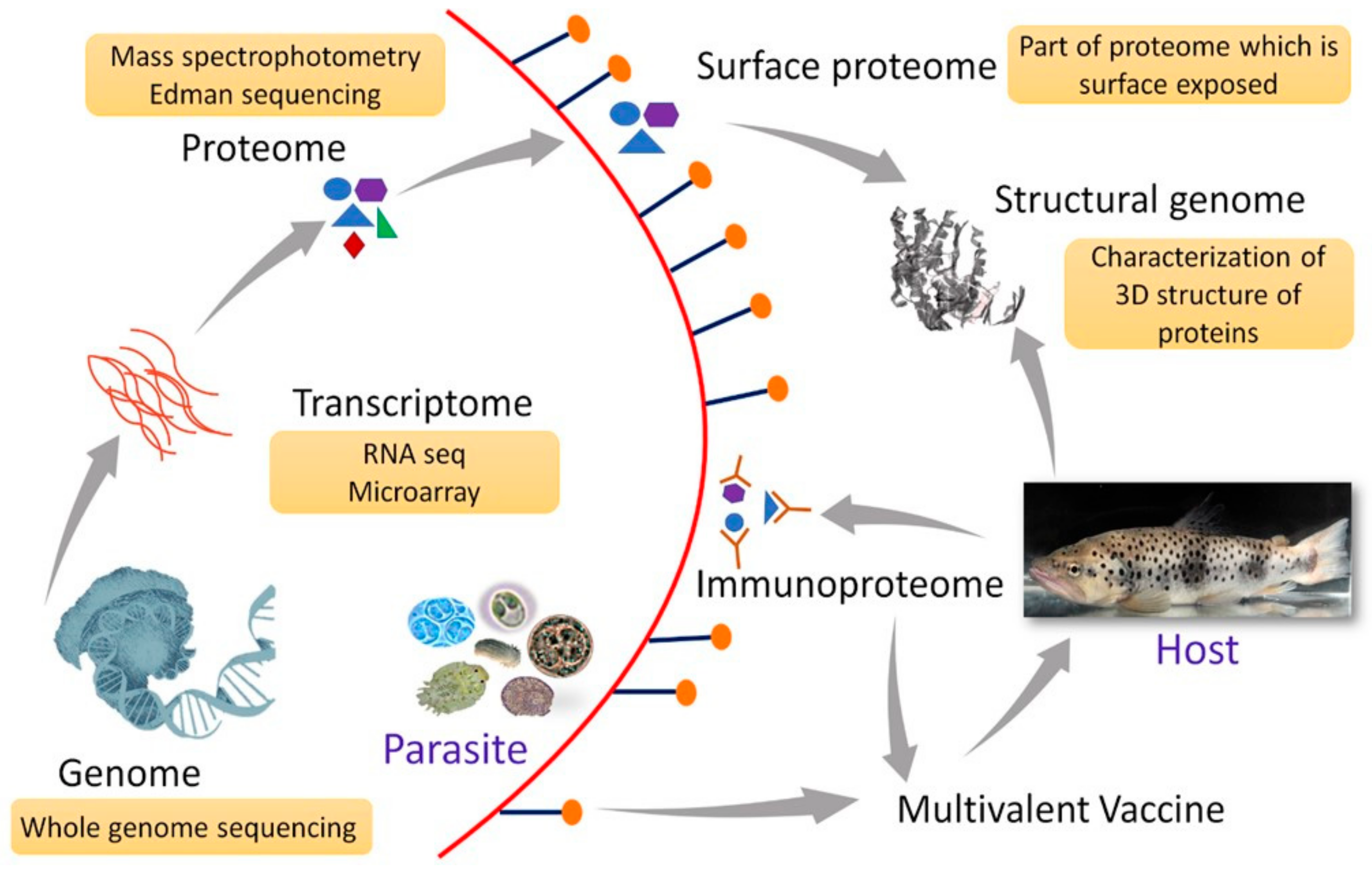
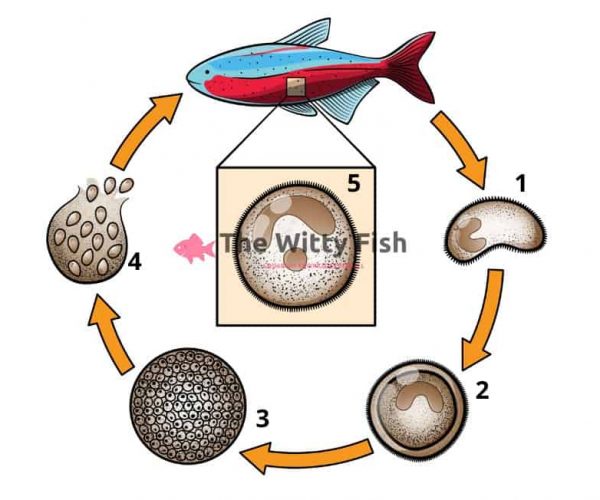
:max_bytes(150000):strip_icc()/treat-ichthyophthirius-multifiliis-1378482_final-0620ebe0a2de47e194e25548f94b12a1.png)
